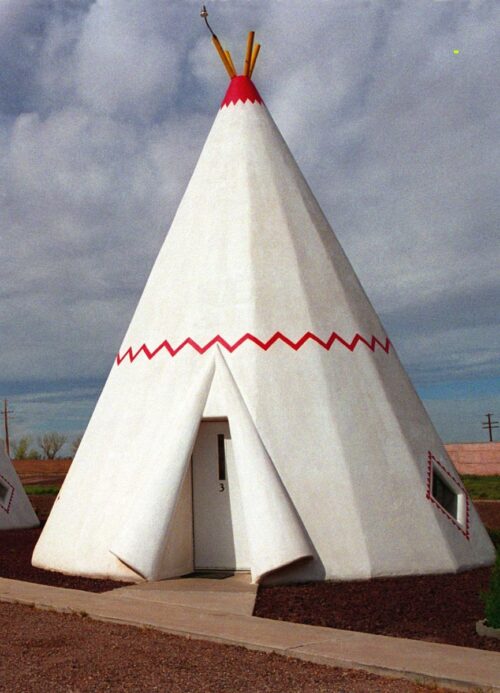Site of Lincoln Nomination
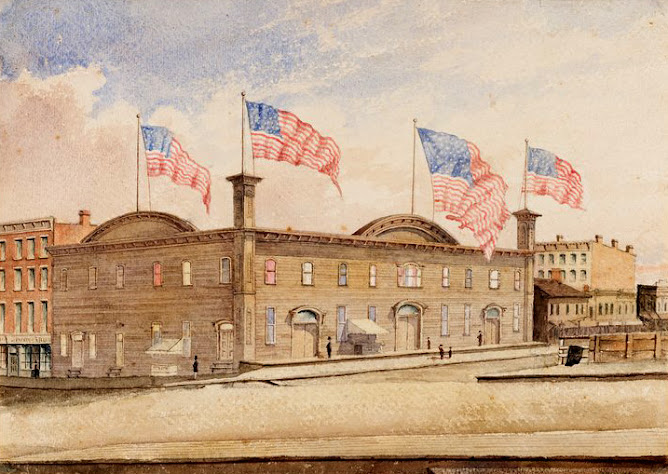
Chicago’s Wigwam 1860

By Megan McKinney
Chicago’s Wigwam, at Lake Street and the current Wacker Drive, was built by Chicago business leaders to attract the 1860 Republican National Convention—which it did, thus becoming the hallowed site of Abraham Lincoln’s nomination to become our nation’s sixteenth President.
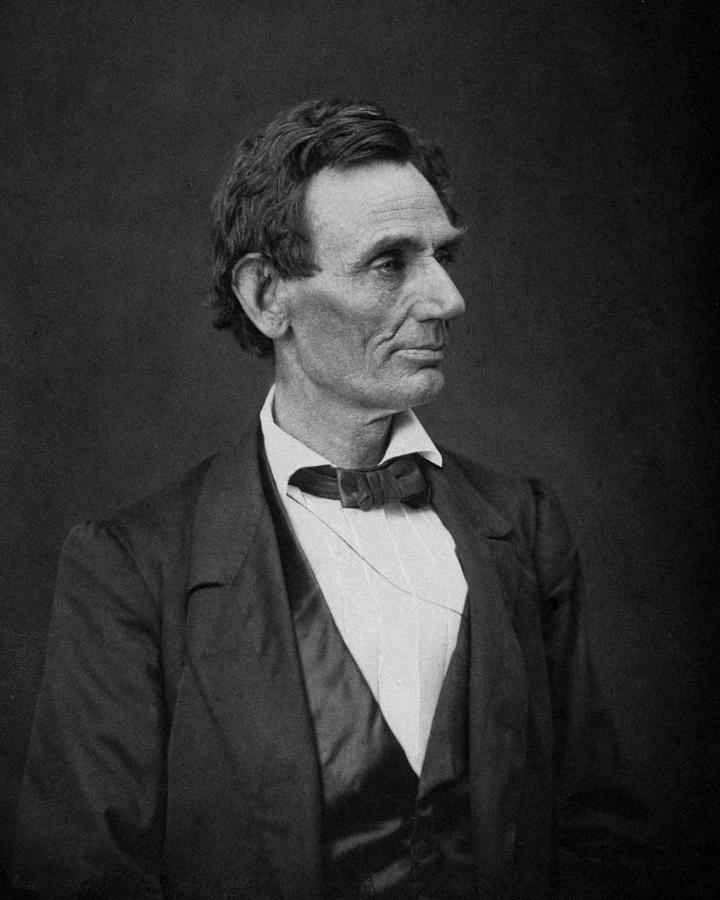
fineartamerica.com
The extraordinary appearance of Abraham Lincoln was captured by photographer David Hinds in 1860.

Above is a plaque dedicated by the Daughters of the American Revolution, marking the spot at Lake and Wacker of the 1860 Wigwam. First unveiled in 1909, the plaque soon vanished. Found in storage decades later, it was rededicated in 2017.

If you are wondering why the building at the top of this article and the above trio of tents carry the same generic name, please note the definition of Wigwam: Temporary Structure.
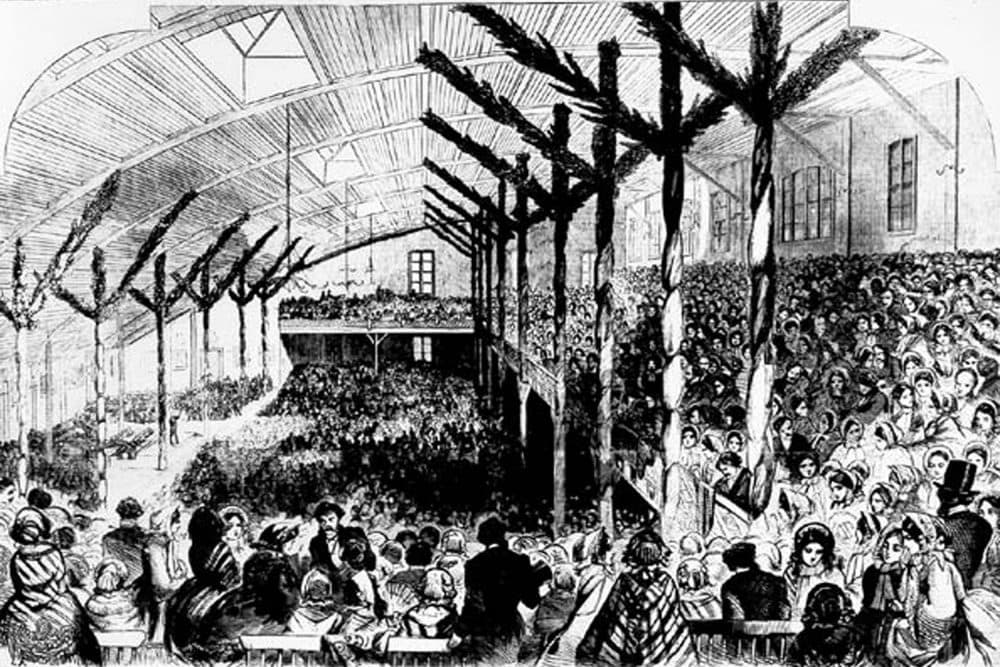
Interior of the 1860 Chicago Wigwam
This two-story Wigwam was indeed a temporary structure. Although it could accommodate as many as twelve hundred people, it was constructed entirely of wood in little more than a month.
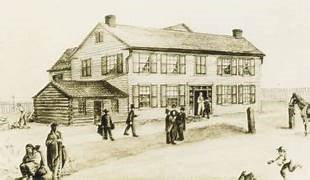
drloihjournal.blogspot.com
Lake and Wacker was already a beloved historic site, that of Illinois’ first hotel, The Sauganash, preceding even Chicago itself. Its name at that time was the Eagle Exchange Tavern, and the little log portion of the building on the left was the city’s first drug store.
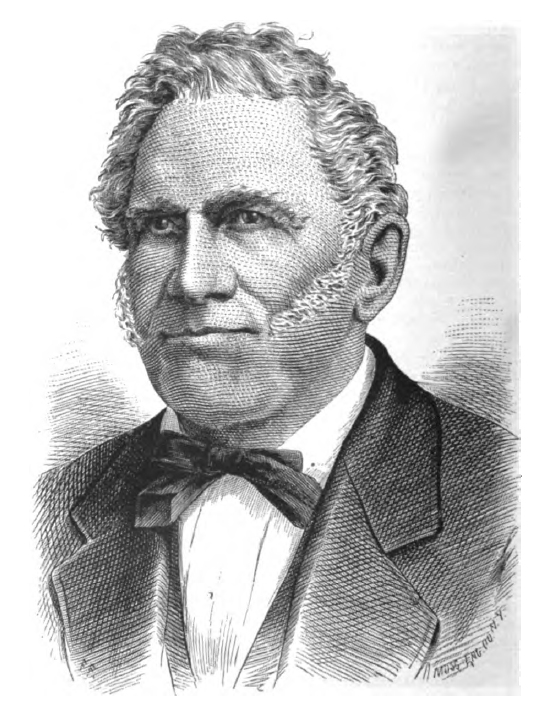 Mark Beaubien
Mark Beaubien
Mark Beaubien, an early figure of the area, built a tavern on the future site of the Wigwam in 1829-30. In 1831, he added a frame to the log structure to create The Sauganash. In naming the hotel, he borrowed a Native American word that means English-speaking person or Englshman. The web tells us this about Mr. Beaubien, “A fun-loving fiddle player, he loved to entertain his guests at night, tempting one to believe stories about his knack for boyish mischief.” More than mischievous was Mark’s renting of blankets to hotel guests—who were to sleep on the floor—for fifty cents a night. “According to one account, he would rent someone a blanket, wait until that person fell asleep on the floor, then take the blanket and rent it to someone else, repeating the trick several times per night.”
It is possible that his fiddle remains today in the Chicago History Museum. If you go there to see it, be certain to ask for a fiddle. The often quoted Mr. Beaubien, who was once asked to play his violin. replied, “I never played the violin. I played the fiddle.”
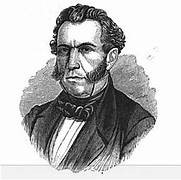
Another “likeness” of Mark Beaubien
Mark left many quotes; however, his most famous is “I keep the tavern like Hell, and I play the fiddle like the Devil.” He also left quite a few children—16 from his first marriage to Monique, and, with his second wife, Elizabeth, there were seven.

We showed you the Wigwam 1860 plaque. If you were to go to the site to look at it, you would be able to see the above Sauganash Hotel plaque on its reverse side.
Author photo: Robert F. Carl



